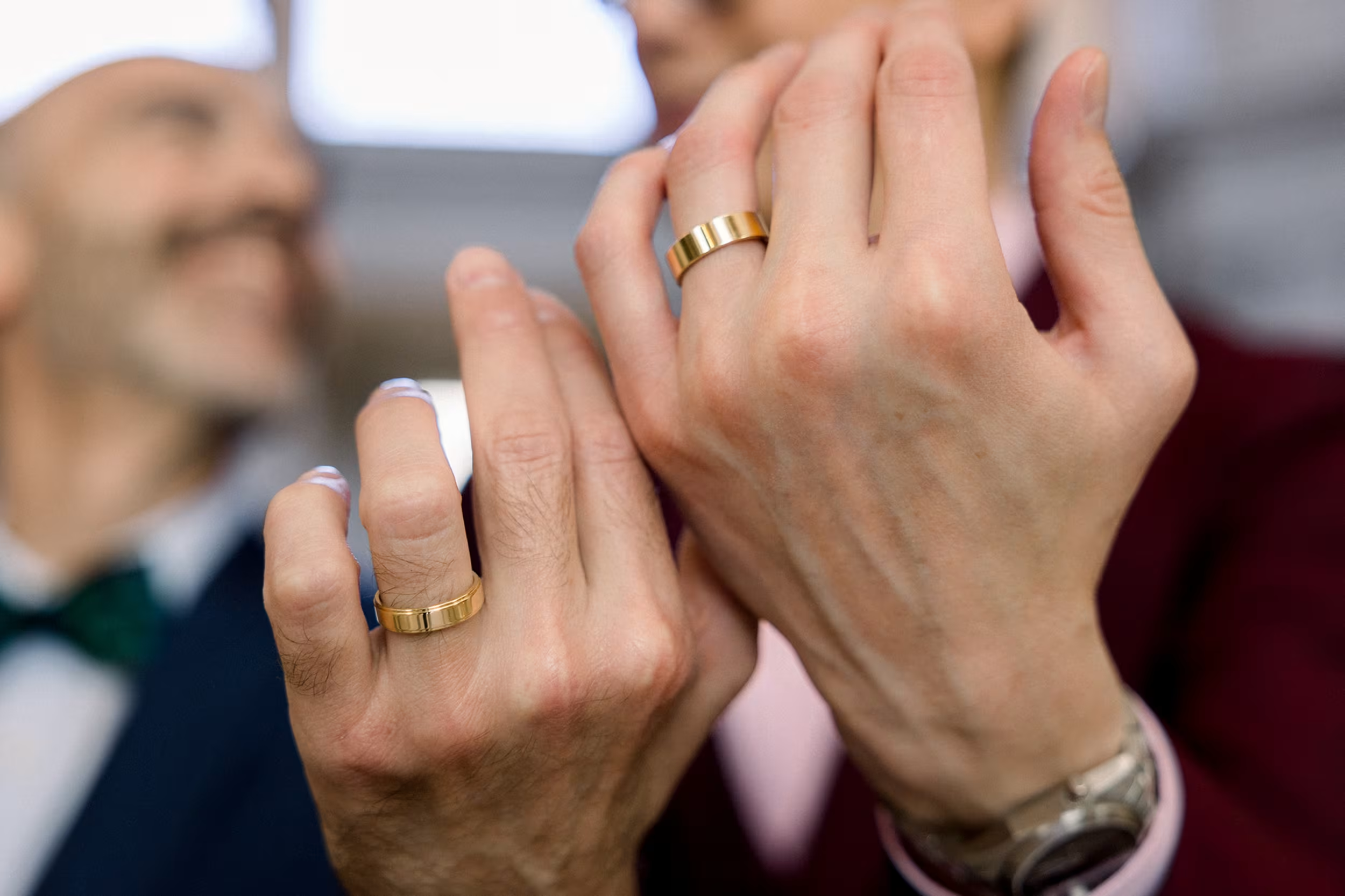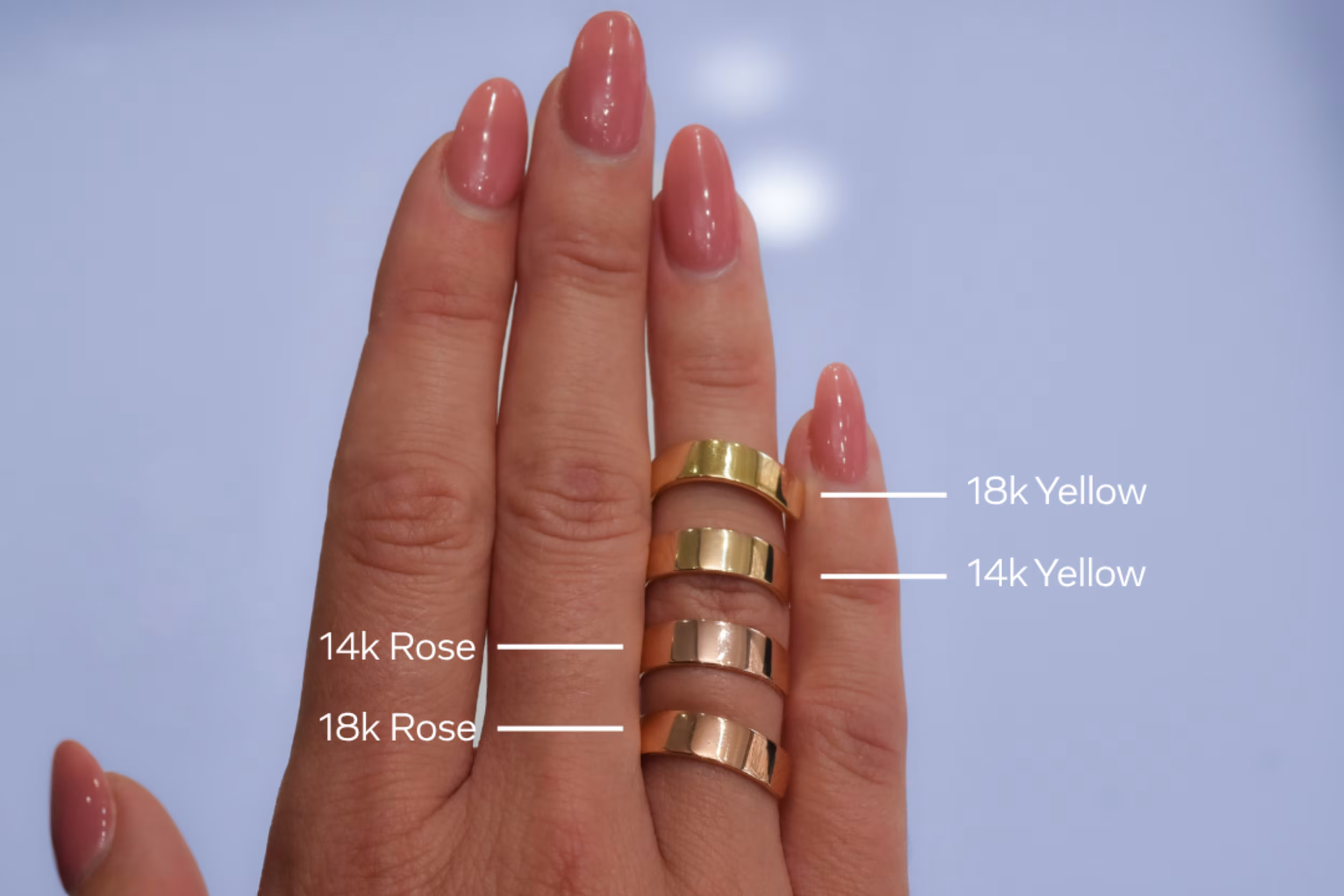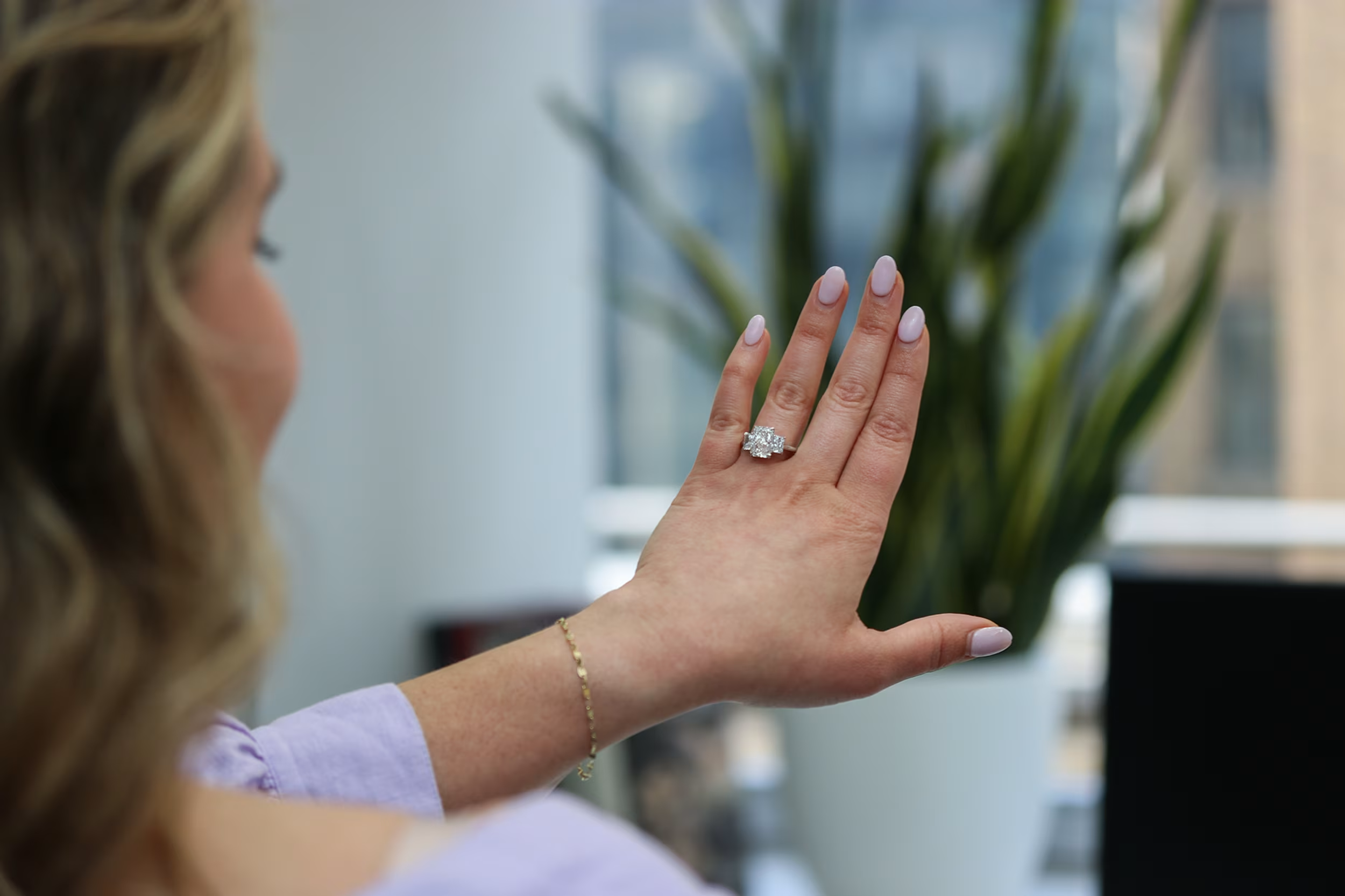14K VS 18K GOLD: WHAT'S THE DIFFERENCE
Gold remains one the most popular choices for fine jewelry and engagement rings. You may be wondering “Should I choose 14k or 18k gold for my engagement ring”? or "Is one better than the other?"
We’ll break down the difference so you can decide which is best for you!

What Does Karat Mean?
“Karat” (abbreviated as “k”) refers to how much pure gold is in a piece of metal. Since pure gold is soft and not ideal for everyday wear, it’s mixed with other metals (like silver, copper, and zinc) to improve durability.
- 18k gold contains 75% pure gold, giving it a rich, warmer tone noticeable in yellow and rose gold styles.
- 14k gold contains 58.3% pure gold, resulting in a slightly paler color but better resistance to wear and tear.

Durability: Which Gold Is Best for Everyday Wear?
If you live a very active or hands-on lifestyle, 14k gold is typically the better choice. It’s more resistant to scratches, dings, and signs of wear.
18k gold is softer and more prone to scratches. If your jewelry is primarily worn on special occasions or you prefer the softer look of 18k gold, it may be the ideal choice for you. There’s nothing wrong with having either!

Color: Warm vs. Rich
18k yellow gold has a brighter and more vivid appearance. 18k rose gold has a more brassy appearance as opposed to 14k rose gold which is more pink.
These differences are subtle there’s no “better” option here, just personal preference and what you like on your skin tone!

Sensitive Skin? Here's What to Know
Both 14k and 18k gold are considered safe for most people. However, 18k gold has fewer alloyed metals and is less likely to cause irritation, making it a great option for those with sensitive skin. Still, 14k gold is generally well tolerated and widely worn without issue.